WIRELESS OPERATOR / AIR GUNNERS Part: 1
(Last updated: 15.06.14 - Richard Thomas)
Here's the first list of WWII 206 Squadron WOp/AG's, click their photograph for their story...
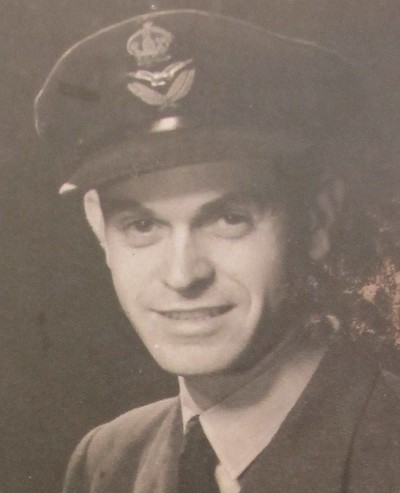
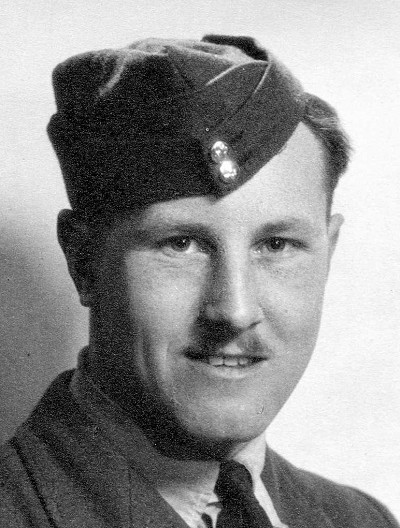
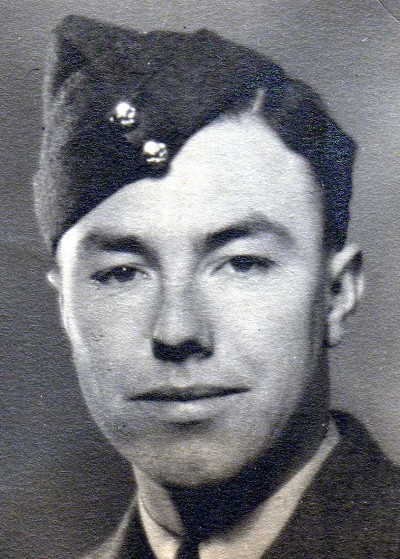
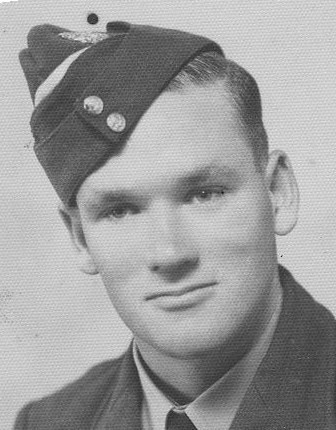
Richard Thomas (2007) Flew with Ken
Eric Crowe by Richard Crowe (2007) Flew with Ken
Ronald Stares by John Ashdown (2007) Flew with Ken
George Cairns by Moira Edge nee Cairns (2008) Flew with Ken
Richard Thomas
Rank: Flight Lieutenant
Number: 174251
Joined 206: 01/11/1941
Flew with Ken: 4 times
Born: 12/07/1920
Died: 05/05/2014
F/Lt Richard Thomas
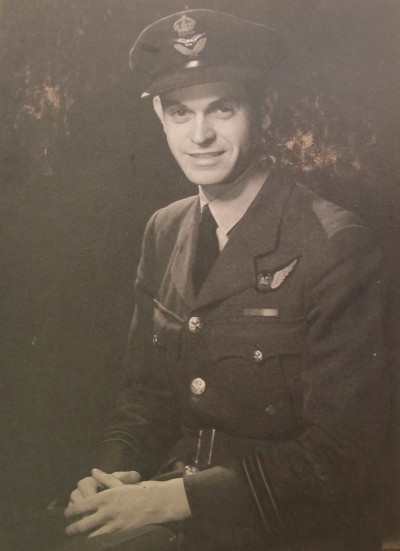
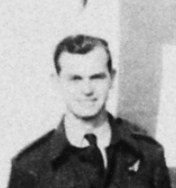

I was sad to learn from Richard Thomas' daughter Valerie that Richard passed away on the 5th May 2014.
Richard originally contacted me in January 2007 as he could see from his logbook that he flew with Ken on 4 separate occasions when converting from Lockheed Hudsons to Flying Fortresses. We stayed in regular contact from that point and we met in April 2011.

Richard was born in July 1920 in Middlesbrough and joined the RAF in August 1940 serving as a Wireless Operator / Air Gunner in Coastal Command 206 Squadron. During 1941 to 1943 he flew on the same 1,000 Bomber raid as Ken to Bremen and was a member of a crew which sank a U boat off Iceland.
Richard is linked to a number of other people within the 'Memoirs' section, the main ones are:
-
Pilots: Part I: John Owen - Richard was part of John's crew
-
Pilots: Part III: William Roxburgh - Richard was part of William's crew
Richard flew as part of F/O John Owen's crew from 26.08.1941 to 24.06.1942 almost exclusively on Lockheed Hudsons, some 140 flights!
Richard was a writer and kind enough to send me a signed copy of his first novel based on his experiences titled 'Towards The Sun', this was followed up with 2 further titles 'Morning Grass' and 'The Heat Of The Day'.
As well as writing books, Richard also wrote articles for a local magazine. Some of these articles focus on his experiences and memories from his time in WWII and 206 Squadron. Four of these stories are copied below whilst a further seven, involving William Roxburgh, can be found in his Memoir.
PLACES AND PEOPLE - 9 - 12/10/2010
Blackpool
Being posted to Blackpool in 1940 by the RAF to start the wireless course leading to becoming a Wireless Operator / Air Gunner opened my eyes to a town I had only heard about as a place for industrial workers on the Eastern seaboard to spend Wakes Week, their only holiday of the year. I have fond memories of the Tower Ballroom and beach, the Derby Baths, and the warm welcome from the Lancashire people, particularly in the boarding house where I was billeted with four other airmen which was run by a buxom landlady and her young daughter; the advertisement at the entrance for Bed and Board being an apt description.
Blackpool, however, could provide other delights. A concert by the Halle Orchestra and Huddersfield Choral Society conducted by Sir Henry Wood was one such evening of entertainment; another was to see Barry K. Barnes in a play, On Approval, from which I was made aware that changing partners within a set of two married couples was quite a normal activity; and, on film, Errol Flynn in The Sea Hawk, and Henry Fonda in The Grapes of Wrath. All this, and learning day-by-day the mysteries of Morse Code and how to set-up, and dismantle and repair if necessary, a Marconi receiver.
It was at Blackpool that I, together with many others, fell foul of authority. A bus firm had hit upon the idea of transporting airmen on an outward journey to various parts of the country for a suitable fee. Without a leave permit, and running the risk of discovery, my friend Ray Simpson and I decided to take part; the urge to get back home to see one's family and girlfriend being too strong to resist. Our journey from Blackpool was to Darlington being as near as we could get to Middlesbrough and Thornaby respectively. We were told by the bus driver to lie down on the floor when we came to a check-point and so passed through without any trouble. Our return was made by train from Darlington arriving at Blackpool to see the station platform full of red-capped military police with RAF trucks pulled up alongside; we later learned that one person who had not joined in the escapade had informed the authorities of what was happening. We, some thirty all told, were taken to a drill hall where we learned from an enraged senior officer what our parentage was, what a disgrace we were to the RAF, and were then placed on a week of jankers. To the uninitiated, jankers consisted of reporting to the parade ground early each morning in uniform and full kit with back-pack and then made to run round the perimeter for a full hour. At the end of 6 days no one had any illusions about bucking against authority in the future.
The Hebrides
Oban, in the Outer Hebrides was the fulcrum for operations being carried out to protect convoys coming across the North Atlantic with vital supplies in WW2. There had been a Naval and RAF presence from before the war which was then augmented by units at Tobermory, Tiree, and Stornoway. My introduction to this area of conflict was with 206 Squadron in 1942. Ted Nelson in his book, 'A Survivors Tale', gives a vivid account of his 14 months stationed in the windswept island of Benbecula; an island covered in runways and buildings. The few people, crofters, left on the island after the inroads of the RAF were difficult to locate, contact was made occasionally when visiting a cottage to buy tweed for making up into jackets which lasted long after the war ended. Girls of any age were even more scarce, or did not show themselves to the thousands of RAF men now dominating their island home. I have it on good authority that girls did appear at locally organised dances but not being a dancer they did not come into my orbit.
Apart from the incessant flying operations leave was granted at regular intervals; an experience looked forward to except for the usually stormy crossings by Macbaynes' ferries from Loch Boisdale to Oban; the return journey tinged by the knowledge that there was no finite end to the job we had to do; a difficult job fraught with dangers. One particularly sad experience for me was the loss of John Owen, an earlier pilot on Hudsons, who flew out with his Fortress crew one day never to return; a fate suffered by more than one crew. I shall always remember a lone piper standing on a rocky outcrop playing a Scottish lament after it was known that Owen and his six crewmen would not come back to base.
It is fitting to end with a quotation from Winston Churchill's WW2 history, Vol. 5:
"The Battle of the Atlantic was the dominating factor all through the war... Vigilance could never be relaxed. Many gallant actions and incredible feats of endurance are recorded, but the deeds of those who perished will never be known."
More Memories From A Wartime Flyer's Logbook - 07/02/2008
12/3/42 12:35 Lockheed Hudson AM875 Pilot F/Sgt Goodson
Anti-Sub Sweep (Landed at Castletown) 7.10 hrs
Goodson - Owen - Thomas - Simpson
It has been an uneventful trip. Flying mile after mile over a grey, stormy sea; no U-boat sightings and not even a glimpse of the odd fishing boat. Now, we were heading for RAF Wick; a diversion from landing at our normal base owing to foul weather. F/Sgt Goodson, who was standing in for P/O Roxburgh who was away on special leave, had made two attempts to land at Stornaway before deciding to fly round Cape Wrath and make for Wick. There was one major hazard, shortage of petrol. The maximum flying time for the Hudson was between 7 and 8 hours. We had been on patrol for over 6 hours and precious fuel had been used in the two abortive landing attempts; added to which I had been struggling to put out a fire in the radar generator, not an exercise to be welcomed in an already existing state of emergency.
Goodson's voice over the R/T came as a blessed relief. He had already instructed his crew to don parachutes ready to make a jump for it as he turned inland from the sea heading for the mountains and glens of Northern Scotland.
"There's an airfield directly below us. I'm going in to land."
Land we did, running out of petrol at the end of the runway. The airfield was a new one, Castletown, not yet marked on the navigational charts.
There are shaves, close shaves, and miracles. Our escape from possible death must surely come into the latter category. I have often looked back to those frantic moments in an apparently doomed aircraft and given thanks once again to the hand of providence which saved us from an untimely demise.
A SCRAPBOOK OF MEMORIES - 08/06/2012
I first met John Owen at No 1 Operational Training Unit at Silloth in Cumbria, together with Will Roxburgh (who were both Officers) Ray Simpson and I (both Sergeants) making up a foursome. We stood on the tarmac alongside a Lockheed Hudson just delivered from America, It was the first of three such aircraft flown over from the USA to assist in the job of searching for U-Boats in the North Atlantic, and carrying out escort duties for the protection of the convoys bringing supplies into into a much needed beleagured Britain. The aim of the meeting of the four men was to start the formation of a crew, particularly to test whether we would be able to work together as a combat unit. This proved to be the case. We made our first operational flight as members of 206 Squadron on 3rd November 1941, an anti-sub sweep of 7 hours duration; the flight was uneventful, a fact that was to be the forerunner of many such missions.
In August 1942 the Squadron converted to the B17 Flying Fortress extending the flying time from around 7 hours in the Hudson to the 11 plus in the Fortress. This still left a gap in the middle of the Atlantic where U-boats could be serviced and provided with supplies without interference except for the possible advent of the Navy, a gap which was not closed until the introduction into service of the Liberator, 17 hours duration, in May 1943.
Never has so much hinged upon the toss of a coin in the case of Ray Simpson and myself which took place when making the change from the Hudson to the Fortress, the latter requiring a crew of eight. The B17 Mk.2 had just been delivered to Benbecula in the Hebrides where we were now stationed. Owen won the toss and opted to take charge of a new Fortress whilst forming a fresh crew; Ray and I remaining with Roxburgh to become the nucleus of his.
In December 1942 Owen and his crew failed to return from a mission over the Atlantic in atrocious weather. When it became apparent that they had probably been lost Roxburgh's crew was allowed to carry out a search for them; a search which brought us back to base greatly saddened. There was no knowing what might have happened; one explanation being that they might have descended to just above sea level to make a required adjustment to the altimeter after take off and been struck by a high wave.
A final reference to a sad memory was that before I fell asleep in the Nissen hut which was our living quarters I heard a faint of music, the rise and fall of the bagpipes. Creeping to the door of the hut I opened it to see the figure of a man in full kilt playing a Scottish lament the people of Benbecula were paying their respects to John Owen and his crew in the only way they knew.
The stage production of the musical Evita began its long run on 21st June 1978 at the Prince Edward Theatre in London. I was not at the first performance but my wife, Agatha, and I were there shortly afterwards to enjoy an evening which I can only describe as out of this world; my immediate reaction being that it was not so much musical theatre as having the quality of an opera. It was helped, of course, in having a superb cast; Elaine Page, Joss Ackland, David Essex, Siobhan McCarthy and Mark Ryan backed up by the excellent chorus, The Company, in which my son-in-law, David Shelmerdine was a member bringing out the melodies of Andrew Lloyd Webber and lyrics of Tim Rice to perfection. Evita had a long run, about eight years, I believe, before being transferred to Broadway in New York in September 1979 where it ran for 1576 performances picking up in the process seven Tony Awards including Best Book and Best Musical Score of the year in 1981.
All the above achievements were brought to mind when I watched a programme on TV recently charting the progress of Elaine Page from the first song she performed on stage to the lovely strains of 'Memories' picking up on the way 'Don't cry for me Argentina'. Elaine sang her way through 40 years of musical theatre in a voice still rich in emotion and technique. It took me back to that first performance in 1978 when she went overnight from a virtual unknown to the star which she is today.
The above account is all the more remarkable in that my preference in music is classical with Italian opera at the forefront. My thanks must be given to all the performers who have brought much pleasure to me in a long life.
Fortress Crews
On the 25th March 1943, Richard's Fortress crew, captained by F/Lt William Roxburgh attacked a U-Boat. They were in Fortress FK195 and successfully sunk the U-Boat which was later identified as U-469. The crew on that particular operation were as follows:
-
F/Lt William Roxburgh
-
Sgt Lloyd Meech
-
F/Sgt Joe Griffith
-
Sgt Richard Thomas
-
F/Sgt Douglas Eley
-
Sgt Jack K Churchill
-
Sgt Ray Simpson
Here is the entry from Richard's logbook:


This photograph was taken after the crew of that Fortress operation reunited in the 1970's.
Richard Thomas - Douglas Eley - Ray Simpson - William Roxburgh - Joe Griffiths
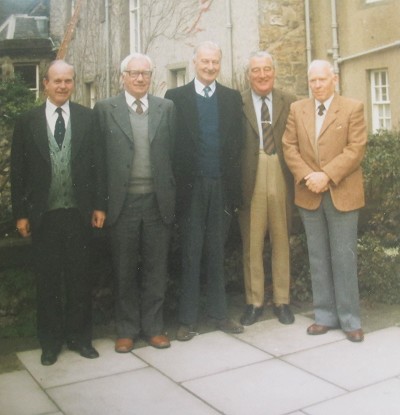
Here is another one of Richard's Fortress crews, this photograph was provided by Joe Griffith through Robert Stitt.
WOp/AG Jock Rimmer - Navigator F/Sgt Joe Griffith - WOp/AG Richard Thomas
Pilot Willis Roxburgh - WOp/AG Sgt Ray Simpson - Co-Pilot Sgt Lloyd Meech
WOp/AG F/Sgt Douglas Eley - Sgt Jack Churchill
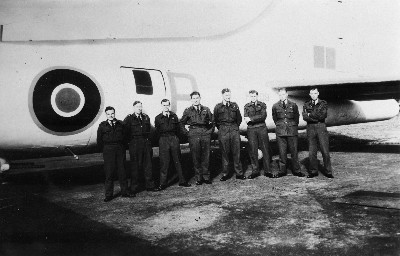
Links to Ken
When Richard originally contacted me, it was to say that he could see from his logbook that he flew with Ken on 4 separate occasions when converting from Lockheed Hudsons to Flying Fortresses.
Richard provided me with the details of those 4 flights which were all in Fortress IIa's, and in April 2011 I took photographs of his logbook first hand after visiting Richard at his home in Saltburn by the sea.
-
26.08.1942 - FK210 - Air to sea firing with Richard as Gunner, Flying Time 01.15 hrs
-
26.08.1942 - FK210 - Photography exercise, Flying Time 00.20 hrs
-
03.09.1942 - FK194 - Benbecula to Burton Wood, Flying Time 02.30hrs
-
04.09.1942 - FK194 - Burton Wood to Middleton-St-George, Flying Time 01.35 hrs
Richards Logbook




Bremen Raid
Richard also flew in the 1,000 Bomber Raid on Bremen on the 25/06/1942 which was the same raid Ken piloted a Hudson. Richard was in Hudson AM788 'A' which was one of twelve Lockheed Hudson crews from 206 Squadron, the entry from Richards logbook is below.
There is more information available within 'F/Lt Ken Bass', within the '1942' section.


Eric Crowe
Rank: Flight Sergeant
Number: 964953
Joined 206: 14/07/1941
Flew with Ken: 3 times
Born: 10/02/1917
Died: 15/12/1942
Richard Crowe contacted me after he came across the section on John Owen (His story is within the 'Pilots: Part I' section), as his father Eric Crowe was one of the crew members on that fateful flight on December 14th 1942. That incident was around 7 months before Richard was born, hence he never knew his father. However he had managed to trace his postings via Eric's Gran and Aunts and found out he was with 206 Squadron from mid 1941. Eric enlisted to the RAF on the 30th April 1940 and made it to No. 1 O.T.U Silloth on the 24th May 1941. It was on the 14th July 1941 that he joined 206 Squadron. Below are photographs sent over by Richard...
F/S Eric Crowe
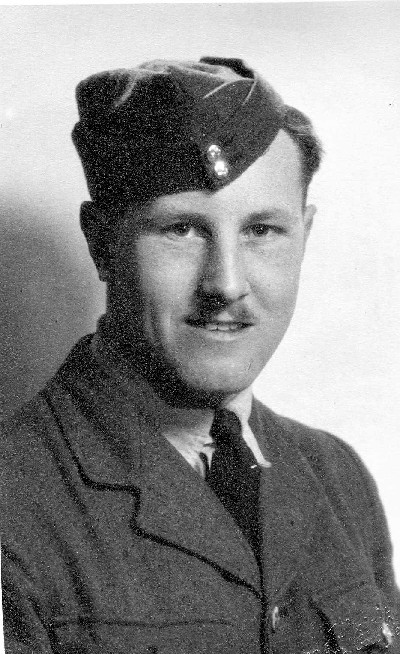

Interestingly Richard has a copy of a photograph from Eric's time in Silloth in No.1 OTU from June 1941. I'm certain there will be other faces linked to 206 Squadron. Having checked Ken's logbook I see Eric was there at the same time as Ken's recorded flying exercises from 18.06.41 through to 09.08.41. On the back of the photograph is the following...
No.6 (Hudson) Op. Training Course, No.1 (Coastal) Operational Training Unit
Silloth, June 1941
Top Row: 3rd from Left - Eric Crowe
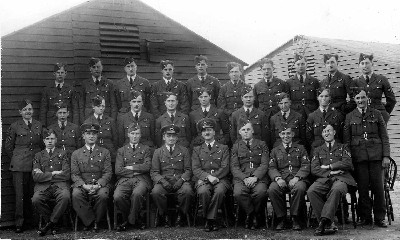
Richard also has copies of Eric's Wedding from 12th October 1942 & crew members shown below
Wedding Day Eric Crowe - C.Neill - R.N.Hildred
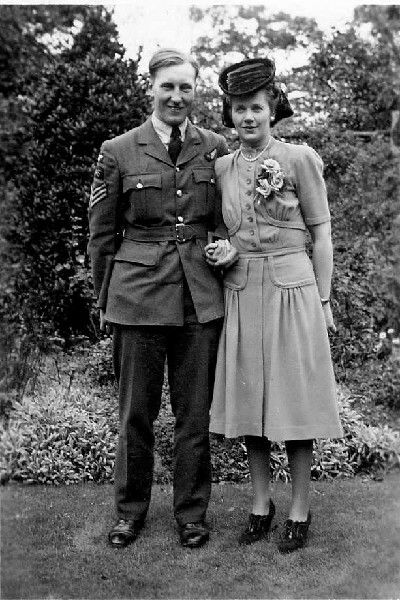
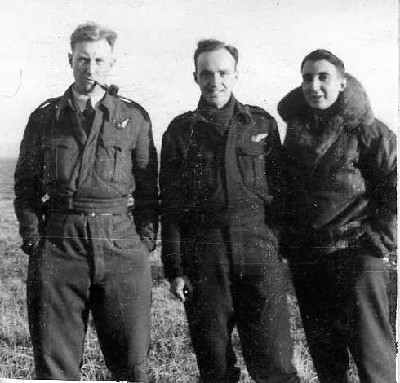
This is the same photograph that appears on John Owen's page taken the day before their fateful flight
13th December 1942
Back Row: F/Sgt E.Crowe - Sgt D.Bryan - F/O J.Owen - Sgt C.Neill
Front Row: Sgt R.N.Hildred - Sgt W.Shanks - Sgt W.J.Parnell
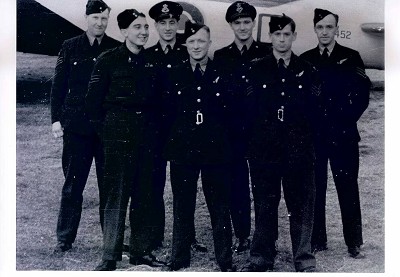
In September 2008, with the help of Richard Crowe I found another photograph of John Owen's crew in front of Fortress FL452 'G', it was in 'Naught Escape Us' by Peter Gunn
13th December 1942
F/Sgt E.Crowe - Sgt R.N.Hildred - Sgt W.Shanks - F/O J.Owen - Sgt C.Neill - Sgt D.Bryan - Sgt W.J.Parnell

On investigation of Eric Crowe in Ken's logbook I found 3 entries that contained a match, 2 of which were just a month prior to the crash...
18th Sep 1941 - Wills was the Pilot, Ken was 2nd Pilot, A/S Sweep (Hudson AM650)
1st Nov 1942 - Ken was the Pilot, A/S Sweep (Fortress FK208 'B')
11th Nov 1942 - Ken was the Pilot, A/S Sweep (Fortress FK208 'B')
The November flights were with Ken's normal crew of Anderson, Roberts, Miller, Morgan and Clemson, with the addition of Eric Crowe.
When I checked the National Archives I found out that Eric was part of a Hudson Crew that attacked a U-boat with 4 depth charges on the 14.02.42 with the comments 'Oil Seen' and a crew of P/O A.J.Davey, Sgt R.Lenton. The pilot was F/Lt L.M.Nelson whose story is the 'Pilots: Part I' section. Simon Nelson has validated this against his father's logbook.
There was another entry in 1942 on the 11.12.42 stating that Eric was part of a crew that attacked 2 U-Boats and faked a third as they had run out of depth charges. That crew was made up of F/O J.Owen whose story is also in the 'Pilots' section, Sgt R.N Hildred, F/S J.T.Rutherford, Sgt W.Parnell, P/O D.E.Bryan, Sgt W.Shanks
Richard has a copy of his Service Record & Pay Book which tells us he joined 206 on the 14.05.41 and details the following…
Eric's Pay Book

Promotions
-
30th April 1940 - AC2
-
13th April 1941 - LAC
-
17th May 1941 - Temp Sergt as a WOp/AG
-
1st December 1942 - F/Sgt
Special Qualifications
-
WOp - 61%
-
AG - 56%
In August 2008 Richard visited the UK, we had an afternoon together to discuss all things 206 and he made several trips around the UK including Benbecula, Duxford and Sutton Coldfield to find Eric's local church. Here's a selection from those trips.
Benbecula
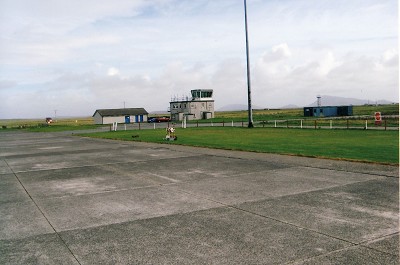
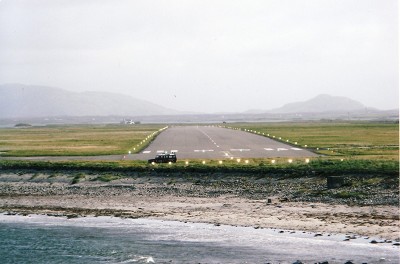
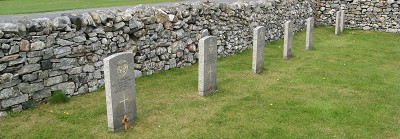
Memorial Plaque
St James, Sutton Coldfield
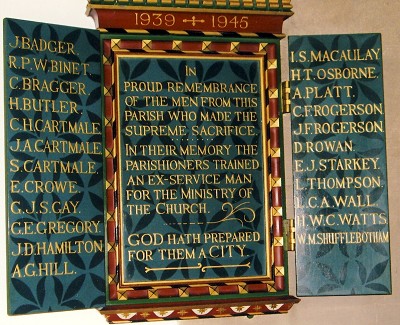
Ronald Stares
Rank: Warrant Officer
Number: 931486
Joined 206: 07/01/1942
Flew with Ken: 4 times
Born: 01/06/1918
Died: 06/01/1944
I contacted John Ashdown after seeing a message he'd left on the World War II Ex RAF website. He was asking for anyone that may have links to his uncle Ronald Stares who served in 206 Squadron. Ronald was born 01.06.1918 to his father Frederick Walter Stares and mother Harriet Stares. He enlisted on the 27.06.1940 and it's believed he trained in Ireland and Canada. John sent the following photographs of Ronald. I was contacted in November 2007 by Moira Edge whose father George William Cairns is also on this photograph, Moira was able to put names to all the faces on this photograph and the next one below.
March 6th 1943
Left to Right on the Wing: Sgt Norris - F/S Bickell
W/Cmdr Romanes - W/O Marriot - Sgt Stares - F/S Baldwin - Sgt Clough - W/O Cairns
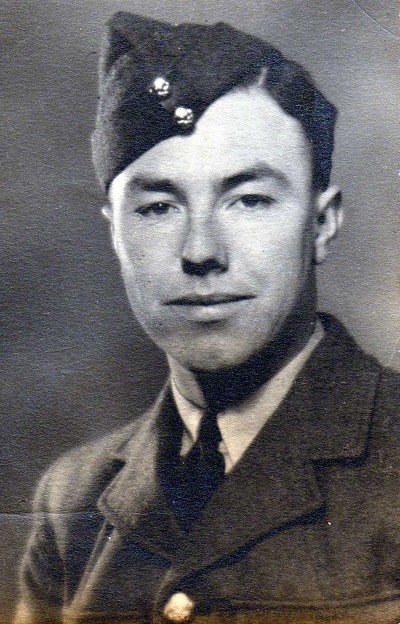

On the 6th January 1944 at 1812 hours they surprised U-Boat 270 on the surface and attacked, 6 minutes later there was radio silence, the U-Boat had shot them down. They were flying in a Flying Fortress II FA705 'U' that is a similar marked aircraft to that recorded in Ken's logbook back on the 9th April 1943 but it was FA705 'O' not 'U'. The crew members that had been shot down were:
Squadron Leader Anthony James Pinhorn (DFC) - Aged 28
Flying Officer Joseph Henry Duncan (Co-Pilot)- Aged - 24
Squadron Leader Ralph Duncan - Aged 33
Flying Officer Francis Dennis Roberts - Aged - 34
Warrant Officer Ronald Norman Stares - Aged - 25
Warrant Officer Class 1 Donald Luther Heard - Aged - 35
Warrant Officer Class 2 Oliver Ambrose Keddy - Aged - 24
Flight Sergeant Thomas Ekersley - Aged - 31
Sergeant Robert Fabian - Aged 24
Links to Ken
An investigation into Ken's logbook yielded 2 interesting finds...
1] There are 4 separate flights recorded in a Fortress with Ken as Pilot and a 'Sgt Stares' as a member of the crew, these were all in 1942:
-
25th Oct 1942 they conducted an A/S Escort to Force
-
29th Oct 1942 they conducted an A/S Escort & Convoy Search
-
29th Nov 1942 they conducted an A/S C.L.A Search
-
1st Dec 1942 they conducted an A/S Sweep
2] There is a flight recorded in a Fortress with Ken as Pilot and a 'Sgt Fabian' as a member of the crew on the 5th November 1942, conducting an A/S Escort. As the flights with both Sgt Stares and Sgt Fabian are so close and they both happened to be part of the same crew on that fateful flight on the 9th April 1943 I'm pretty sure that Ken did fly with them both the year earlier!
Some further photographs of Ronald
March 6th 1943
Sgt Clough - Sgt Stares - W/O Marriot - W/Cmdr Romanes - F/S Baldwin - F/S Bickell - Sgt Norris - W/O Cairns
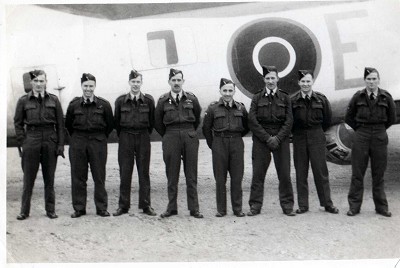
Ronald 1st on the right
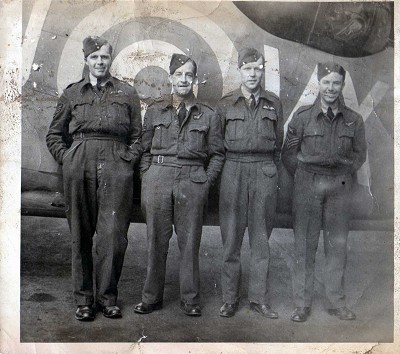
George Cairns
Rank: Warrant Officer
Number: 411232
Joined 206: ??/??/1942
Flew with Ken: 1 time
Born: 22/07/1919
Died: ??/11/1995
Moira Edge nee Cairns contacted me in November 2007 after finding the website and seeing her dad on a photograph within the section on Ronald Stares above. Her dad was Warrant Officer George William Cairns and he was a Wireless Operator / Air Gunner in 206 Squadron. It also turns out that he flew with Ken (Grandad) and a number of other pilots mentioned throughout the website such as F/O Owen and F/O Roxburgh. Moira has sent the following information about her dad along with the photographs below...
George and Mary Cairns
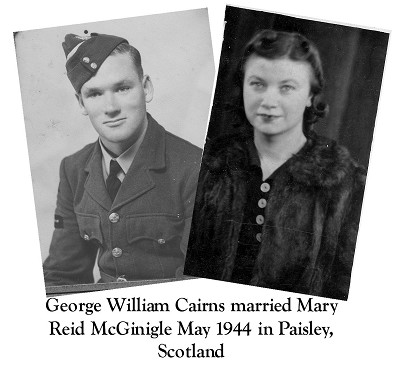
W/O George William Cairns
RNZAF (411232)
"George William CAIRNS was born in Kaitangata, New Zealand 1922 to George Mitchell Cairns and Catherine nee McNee.
He was working as an orchard hand at Rendez Vous Gardens, Coal Creek, Roxburgh, for his half-brother, Jim Williamson, when war broke out and he seized the opportunity of overseas travel and adventure.
He was attested for service in the NZ Air Force 27th September 1940 aged 19 and trained as a Wireless Operator / Airgunner in Canada and the UK. He joined the 206 squadron on the 19th Aug 1942 until 12th Apr 1944.
As well as flying with F/O Owen and W/O Bass, pilots such as Sgt Earl, S/L Patrick, F/O Michelson, W/C Romanes, F/O Roxburgh, F/L Vickerstaff, are listed repeatedly in George's log book.
Aircraft he flew in were Norseman, Menasco Moth, Battle, Botha, Anson, Hudson, Fortress E, Oxford, Fortress 17 BF (?), Domine and the Warwick
He met and married Mary Reid McGinigle in Paisley, Scotland. and Mary came out on the SS Rimutaka Jan 1945 (Geordie was fined in a mock court (a form of fundraising) for " importing scotch" at Roxburgh New Zealand).
Following his return from the war he worked at the Roxburgh hydro, and bought land and planted it out in fruit trees before finally buying the orchard from his half-brother. But he sometimes said maybe he should have stayed in the Air Force.
He spoke of his days in the 206 squadron, saying the camaraderie made them some of the best years of his life.
Dad would have loved all this information available to us via the internet now but sadly, he died on the 19th Nov 1995 in Dunedin Hospital.
Moira Edge nee Cairns NZ - 24th Jan 2008"
Housework at St Eval? Azores Feb 1944 - 2nd Left: Cairns


Front Right: George Cairns

March 6th 1943
Left to Right on the Wing: Sgt Norris - F/S Bickell
W/Cmdr Romanes - W/O Marriot - Sgt Stares - F/S Baldwin - Sgt Clough - W/O Cairns

March 6th 1943
Sgt Clough - Sgt Stares - W/O Marriot - W/Cmdr Romanes - F/S Baldwin - F/S Bickell - Sgt Norris - W/O Cairns
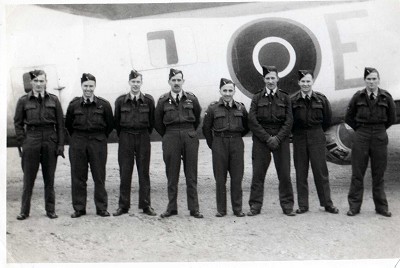
Mystery Celebrity
Front Right: George Cairns and a celebrity in the middle - Recognise him?

Links to Ken
After a small amount of research I cross referenced George Cairns with Ken's logbook and the National Archives and found the match that Moira highlighted on the 11.11.1942. George was the WOp/AG and Ken was the pilot in Fortress IIA FL208 'B', they were conducting an A/S Sweep covering CNS 144, see the scan of George's logbook below...
George also flew with John Owen (whose story is in the 'Pilots' section) on the 28.09.1942 in Fortress IIA FK191 'N' from Benbecula to Stornoway. On the 12.11.1942 just a month and 2 days prior to the day John Owen and his crew were sadly lost, George had flown in that very Fortress IIA FL453 'A'
George's logbook entry: 11.11.42 'Bass'

